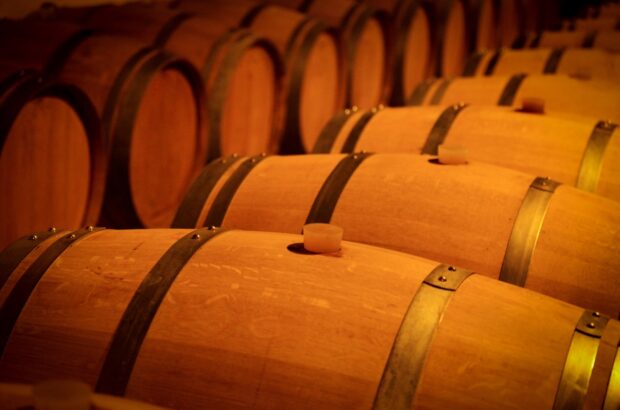Do all wine bottles have a punt?
Not really – you may have noticed that many of the slim and tall ‘flute’ bottles are flat-bottomed.
The traditional German ‘Hock’ Riesling bottle lacks a punt, says fine wine importer Justin Knock MW.
‘The reasons are largely historical and hark back to different bottle-manufacturing technology in Germany, the homeland of Riesling, though the bottle shape and lack of a punt have persisted across the world today for these wines.’
What is the wine bottle punt for?
In the age of handmade (mouth-blown) wine bottles, the indented bottom was believed to be originally crafted to help stabilise the bottle as it stood and to strengthen its structure, especially for sparkling wines, which must withstand high internal pressure.
‘Some saw them as advantageous for reds, enabling better sediment separation for decanting,’ adds Knock. ‘Puntless bottles need less glass and are therefore cheaper to manufacture and transport.’
In the case of flute bottles, ‘it may simply be that the creators of the Hock bottle in Germany had more sophisticated glass-manufacturing technology, with its global adoption most likely driven in an era when Hock-style wines were more highly prized.’
But with today’s manufacturing technology, punts are now more a matter of design and branding.

Credit: Steve Cukrov / Alamy Stock Photo
Quality and the wine bottle punt
The heavier weight of bottles with a punted base – much like the use of natural cork – may give a psychological impression of luxury and quality, especially for consumers who are just beginning to explore wine.
While opinions differ on the usefulness of the wine bottle punt versus its aesthetic tradition, most critics agree that a wine’s quality cannot be judged by the size of the punt.
If any correlation exists, it’s that crafting the punt requires more glass, leading to higher production costs. On this basis, it could be argued that premium wines are more likely to adopt such a design.
However, as the Riesling example above shows, this is far from a universal rule – and would be a blunt instrument for anyone attempting to measure quality.
Today, the overwhelming trend of sustainability and reducing carbon emissions in the wine industry is also leading to less use of punted bottles, as their added weight contributes to a larger carbon footprint. For producers, choosing lighter bottles nowadays has increasingly become a signal of their commitment to environmental responsibility.







